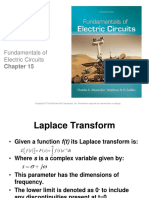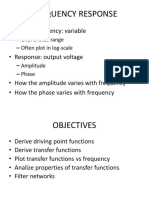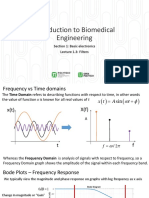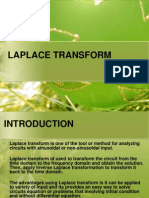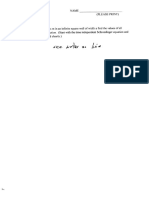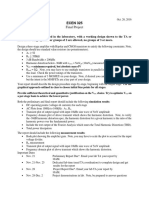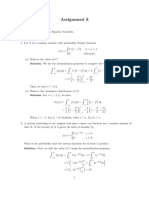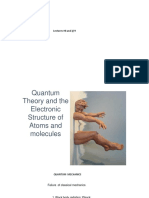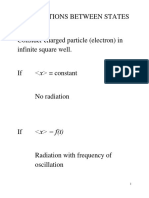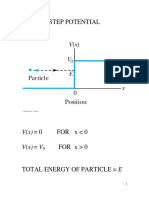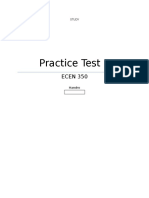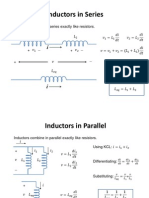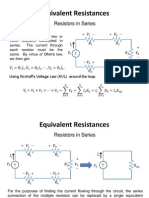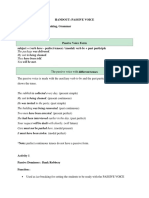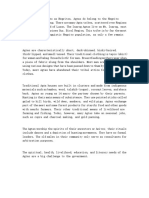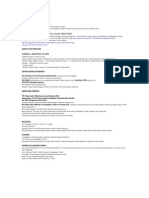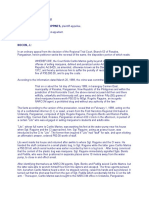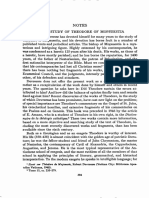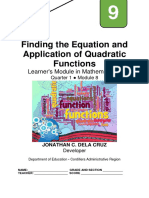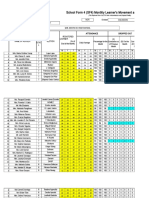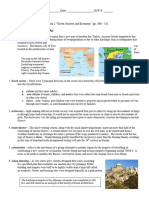ECEN325: Electronics
Spring 2015
Lecture 2: Linear Circuit Analysis Review
Sam Palermo
Analog & Mixed-Signal Center
Texas A&M University
�Announcements
Reading
Fundamentals of Circuit Analysis (Dr. Silva)
1.1, 1.2, App. D, E, F (Sedra/Smith)
Homework 1 is posted on website and due
2/3/2015
�Agenda
Laplace Transform
Passive Circuit s-Domain Models
Transfer Functions
Sinusoidal Steady-State Response
Poles & Zeros
Bode Plots
Second-Order Systems
�References
Continuous & Discrete Signal & System Analysis,
3rd Ed., C. McGillem and G. Cooper, Saunders
College Publishing, 1991.
Feedback Control of Dynamic Systems, 3rd Ed., G.
Franklin, J. Powell, and A. Emami-Naeini,
Addison-Wesley, 1994.
Design of Analog Filters, R. Schaumann and M.
Van Valkenburg, Oxford University Press, 2001.
4
�Motivation Example
Given vo 0 0
Write a KCL at vo
vo t sin 105 t
dv t
10nF o 0
1k
dt
dvo t
vo t
sin 105 t
1k 10nF 1k 10nF
dt
Now, if we remember anything from out Diff. Eq. class, we can solve this equation.
vo t
1 105 t
e
2
Note, this is not trivial.
5
1
1
1
1
cos105 t sin 105 t e 10 t
sin 105 t 45
2
2
2
2
transient response
(can go to zero quickly)
sinusoidal steady-state
response
Now, lets look at Laplace Transforms to make this easier
5
�Laplace Transform
Laplace transforms are useful for solving
differential equations
One-Sided Laplace Transform
Lxt X s xt e st dt
where s is a complex variable
s j
Note, j 1 and is the angular frequency (rad/s)
s has units of inverse seconds (s-1)
6
�Laplace Transform of Signals
[McGillem]
7
�Laplace Transform of Operations
[McGillem]
8
�Resistor s-Domain Equivalent Circuit
vt Rit
Time-domain Representation:
Complex Frequency
Representation:
1
i t vt
R
V s RI s
I s
1
V s
R
�Capacitor s-Domain Equivalent Circuit
Time-domain Representation:
1t
vt i d v0
C0
i t C
Complex Frequency
Representation:
dvt
dt
1
1
V s
I s v0
sC
s
I s CsV s Cv0
10
�Inductor s-Domain Equivalent Circuit
vt L
Time-domain Representation:
Complex Frequency
Representation:
di t
dt
1t
i t v d i 0
L0
V s LsI s Li 0
1
1
I s V s i0
sL
s
11
�s-Domain Impedance w/o I.C.
V s I s R
V s I s
Z s R
Z s
1
sC
1
sC
V s I s sL
Z s sL
12
�Transfer Function
H s
L vo t Vo s
L vi t Vi s
The transfer function H(s) of a network is the
ratio of the Laplace transform of the output and
input signals when the initial conditions are zero
This is also the Laplace transform of the
networks impulse response
13
�RC Transfer Function
Vo s
1
sC
ZC
1
Vin s
Vin s
Vin s
1
1 sRC
Z R ZC
R
sC
AC Transfer Function, H(s)
Vo s
1
H s
Vin s 1 sRC
14
�Laplace Transform Circuit Example
Given vo 0 0
Convert to
Laplace Domain
Vo s
10 5
1
1
H s
Vin s 1 sRC 1 s
s 10 5
10 5
5
10 5
10
Vo s H s Vi s
2
s 10 5 2
s 10 5
with partial fraction expansion
1
1
1 5
s
10
2
2
2
Vo s
s 10 5 s 2 10 5 2 s 2 10 5 2
v o t
1 105 t
e
2
with inverse Laplace Transform
5
1
1
1
1
cos10 5 t sin 10 5 t e 10 t
sin 10 5 t 45
2
2
2
2
15
�Laplace Transform Circuit Example
We can decompose the output into it' s transient and steady - state response
5
1
1
sin 10 5 t 45 vtr t v ss t
v o t e 10 t
2
2
5
1
v tr t e 10 t
2
1
v ss t
sin 10 5 t 45
2
Note that the transient response decays very quickly!
16
�Sinusoidal Steady-State Response
If input vi t is sinusoidal
vi t A cost
The steady - state output will be
v ss t H j A cost H j
17
�RC Circuit Sinusoidal Steady-State Response
Vo s
1 s j
1
H j
H s
Vin s 1 sRC
1 jRC
Output Magnitude
1
1
H j H j H j
1 jRC 1 jRC
*
H j
1 RC 2
Output Phase
ImH j
ImNum
ImDen
tan 1
tan 1
H j tan 1
Re
H
j
Re
Num
Re
Den
where Num Numerator and Den Denominator of H j
H j tan 1 RC
0
RC
1
H j tan 1 tan 1
tan RC
1
1
18
�RC Circuit Sinusoidal Steady-State
Response Example
H s
1
1
s
10 5
with s j j10 5
H j10 5
H j10
1
1 j
1
1
2
2
H j10 5 tan 1 1 45
v ss t
1
2
sin 10 5 t 45
19
�Complex Numbers Properties
[Silva]
Numerical Example
1 j1010 j10
100 j101000 j10
1 j1010 j10
100 j101000 j10
12 10 2 10 2 10 2
100 2 10 2 1000 2 10 2
1.41 10 3
1 j1010 j10 tan 1 10 tan 1 10 tan 1 10 tan 1 10 123
100 j101000 j10
1
10
100
1000
20
�Inverse Tangent Function
For small values approximately 0
For large values saturates at /2 or 90
Between 0.1 and 10 can be approximated as
changing with a slope of 45 per decade
21
�Poles & Zeros
H s A
s z1 s z2 ...s zm
s p1 s p2 ...s pn
Poles are the roots of the denominator (p1, p2, pn) where H(s)
Zeros are the roots of the numerator (z1, z2, zm) where H(s)0
105
Example 1 : H s
s 105
Example 3 : H s
s 105 0
s 15 0
p1 s 105 rad / s
s
Example 2 : H s
s 105
z1 s 0rad / s
s 105 0
100s 15
s 2 50 s 1500
z1 s 15rad / s
s 2 50 s 1500 0
p1, 2 s1, 2
50 2500 6000
25 j 29.6rad / s
2
p1 s 105 rad / s
22
�Bode Plots
Technique to plot the Magnitude (squared) and
Phase response of a transfer function
Magnitude is plotted in Decibels (dB), which is a power
ratio unit
dB
H j 10 log10 H j
2
dB 20 log
10
H j dB
Phase is typically plotted in degrees
ImH j
H j tan
ReH j
1
23
�RC Bode Plot Example
H s
H s
Vo s
1
1
1
Vin s 1 sRC 1 s10 5 1 j10 5
1
1 j10 5
1
, where p1 10 5 rad/s
j
1
p1
Magnitude Squared (dB):
20 log10 H j 20 log10
Phase:
1 10 5
20 log10 1 20 log10 1 10 5
PhaseH j tan 1 10 5
24
�RC Bode Plot Example
Magnitude:
20 log10 H j 20 log10
Phase:
~20log10 (1)
= 0dB
~-20log10 (10-5)
= -20dB/dec
1 10 5
20 log10 1 20 log10 1 10 5
PhaseH j tan 1 10 5
(rad/s)
|H(j)|
|H(j)|2
20log10|H(j)| (dB)
Phase (H(j)) ()
103
0.9999
0.9999
~0
~0
104
0.995
0.990
-0.043
-5.71
5x104
0.894
0.800
-0.969
-26.6
105
0.707
0.500
-3.01
-45.0
5x105
0.196
0.039
-14.2
-78.7
106
0.100
0.010
-20.0
-84.3
107
10-2
10-4
-40.0
-89.4
108
10-3
10-6
-60.0
-89.9
-45/dec
25
�RC Bode Plot Example
Max Error = 3.01dB
-20dB/dec
Max Error = 5.71
-45/dec
26
�Transient Response
= 103 rad/s = -p1/100
vo t 1
Phase Shift 0
= 105 rad/s = -p1
vo t
1
2
Phase Shift -45
= 106 rad/s = 10*p1
vo t 0.1
Phase Shift 84.3
27
�Bode Plot Algorithm - Magnitude
1. Where is a good starting point?
a.
b.
Calculate DC value of |H(j)|
If not a reasonable value, I like to calculate |H(j)| at equal
to the lowest non-zero value of p1/10 or z1/10
2. Where to end?
a.
Calculate |H(j)| as
3. Where are the poles and zeros?
a.
b.
Beginning at each pole frequency, the magnitude will decrease
with a slope of -20dB/dec
Beginning at each zero frequency, the magnitude will increase
with a slope of +20dB/dec
4. Note, the above algorithm is only valid for real poles
and zeros. We will discuss complex poles later.
28
�Bode Plot Algorithm - Magnitude
104 s 1
101 s
H s
s 10s 100 1 s 1 s
10 100
DC Magnitude 10 20dB
HF Magnitude 0 dB
20 log10 H j 20 log10
10 1 2
1 10
1 2
1 10
2 2
2
2
20 log10 10 20 log10 1 2 20 log10 1 101 20 log10 1 10 2
z1 1, p1 10, p2 100
-20dB/dec.
+20dB/dec.
-20dB/dec.
+20dB/dec.
-20dB/dec.
29
�Bode Plot Algorithm - Phase
1. Calculate low frequency value of Phase(H(j))
a.
b.
c.
An negative sign introduces -180 phase shift
A DC pole introduces -90 phase shift
A DC zero introduces +90 phase shift
2. Where are the poles and zeros?
a.
b.
c.
For negative poles: 1 dec. before the pole freq., the phase will
decrease with a slope of -45/dec. until 1 dec. after the pole
freq., for a total phase shift of -90
For negative zeros: 1 dec. before the zero freq., the phase will
increase with a slope of +45/dec. until 1 dec. after the zero
freq., for a total phase shift of +90
Note, if you have positive poles or zeros, the phase change
polarity is inverted
3. Note, the above algorithm is only valid for real poles
and zeros. We will discuss complex poles later.
30
�Bode Plot Algorithm - Phase
104 s 1
101 s
H s
s 10s 100 1 s 1 s
10 100
H j 180 tan 1 tan 1 tan 1
1
10
100
LF Phase 180
z1 1, p1 10, p2 100
+45/dec.
-90/dec.
+45/dec.
-45/dec.
-45/dec.
-45/dec.
31
�Second-Order Systems:
Real or Complex Poles?
H s
k102
s2 s
0
Q
02
0
02
2 poles p1 , p 2
2Q
2Q
2 real poles if Q 0.5
2 complex conjugate poles if Q 0.5
32
�Second-Order Systems Real Poles (1)
104
104
H s 2
s 1001s 1000 s 1s 1000
2 poles : p1 1, p2 1000
Note, Q 0.032
-20dB/dec.
-45/dec.
-40dB/dec.
-45/dec.
If poles are spaced by more than 2 decades, there
are 2 distinct regions of -45/dec phase slope
33
�Second-Order Systems Real Poles (2)
100
100
H s 2
s 11s 10 s 1s 10
2 poles : p1 1, p2 10
Note, Q 0.287
-45/dec.
-20dB/dec.
-40dB/dec.
-90/dec.
-45/dec.
If poles are spaced by less than 2 decades, there is a region
of -90/dec phase slope
Watch out for system stability!
34
�Second-Order Systems Complex Poles
H s
k102
s2 s
02
Q
What is the low frequency magnitude?
H j 0 k1
What is the high frequency magnitude?
H j
k102
-40dB/dec. slope at high frequencies
What happens in the middle, particularly near 0?
H j 0
k102
02 j
02
Q
02
k1Q
Note, if Q 1 then the magnitude exceeds the low frequency value, i.e. frequency peaking occurs!
35
�Frequency Peaking w/ Complex Poles
Where is the peak frequency?
d H j
d
For k1=1 and 0=1
2
4
k1 0
d
0
2
d
2
2 2 0
0
Q
pk 0 1
1
2Q 2
0 for large Q
At pk , the peak value is
T pk
k1Q
1
1
4Q 2
k1Q for large Q
Note, phase always
crosses -90 at 0
[Schaumann]
36
�Second-Order Systems Bode Plots Summary
2 real poles Plot with standard Bode plot
techniques
2 complex poles Approximate as 2 real poles
at 0
Past 0 the magnitude decreases at -40dB/dec
From 0.10 to 100 the phase slope is -90dB/dec
A more exact plot of second order systems can
be obtained by calculating Q and using the
reference plots on the previous slide
H j0
k102
02
02
j
Q
02
k1Q
37
�Next Time
OpAmp Circuits
38
